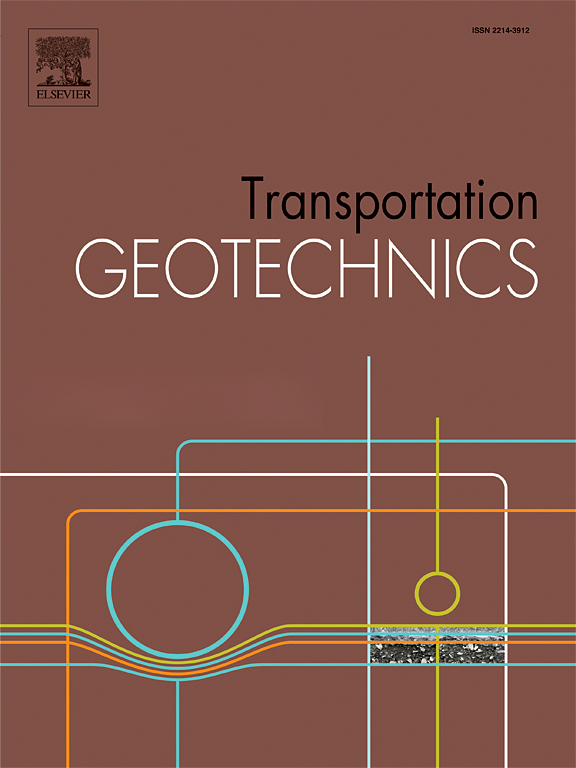Influence of Collapsible Shape of Loess Foundation on High-Speed Railway Subgrade under Train Vibration Loading
IF 4.9
2区 工程技术
Q1 ENGINEERING, CIVIL
引用次数: 0
Abstract
Collapsible loess has special sensitivity to water, and its engineering mechanical properties deteriorate significantly after immersion in water, causing the foundation to sink, which seriously threatens the safety and stability of the high-speed railway subgrade under train vibration loading. Studying this effect is essential to prevent and control the disasters of high-speed railway subgrades. In this study, a model with the function of simulating foundation settlement is established to conduct disaster testing of high railway subgrade under train vibration loading. The results indicate that when different foundation shapes are settled, the surface of the subgrade under static load is gradually settled in a short time, and the settlement value of the track surface is lower than that of the corresponding subgrade surface. Under train vibration load, the maximum dynamic settlement occurs at the middle of the subgrade slope, which is smaller than the corresponding settlement under static load. The number of stabilization times required from different monitoring positions on the subgrade surface is different under different excitation forces, and the number of stabilization times required is more in the middle of the subgrade slope and the slope shoulder. The influence of train speed on subgrade has a critical respond speed that increases with increasing vibration times. There are horizontal, vertical and 45° angle cracks in the middle of subgrade slope. It is qualitatively assessed that the slope of the high-speed railway subgrade in the collapsible loess area is unstable under the effect of train load. The data and rules provided in this document provide some reference values for the construction of a high-speed railway in the collapsible loess area.
求助全文
约1分钟内获得全文
求助全文
来源期刊

Transportation Geotechnics
Social Sciences-Transportation
CiteScore
8.10
自引率
11.30%
发文量
194
审稿时长
51 days
期刊介绍:
Transportation Geotechnics is a journal dedicated to publishing high-quality, theoretical, and applied papers that cover all facets of geotechnics for transportation infrastructure such as roads, highways, railways, underground railways, airfields, and waterways. The journal places a special emphasis on case studies that present original work relevant to the sustainable construction of transportation infrastructure. The scope of topics it addresses includes the geotechnical properties of geomaterials for sustainable and rational design and construction, the behavior of compacted and stabilized geomaterials, the use of geosynthetics and reinforcement in constructed layers and interlayers, ground improvement and slope stability for transportation infrastructures, compaction technology and management, maintenance technology, the impact of climate, embankments for highways and high-speed trains, transition zones, dredging, underwater geotechnics for infrastructure purposes, and the modeling of multi-layered structures and supporting ground under dynamic and repeated loads.
 求助内容:
求助内容: 应助结果提醒方式:
应助结果提醒方式:


